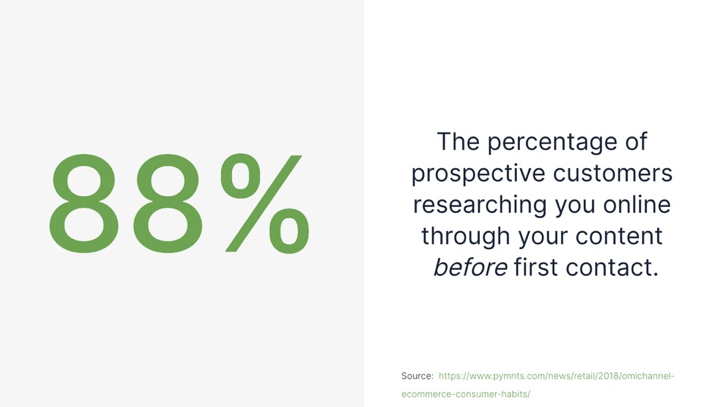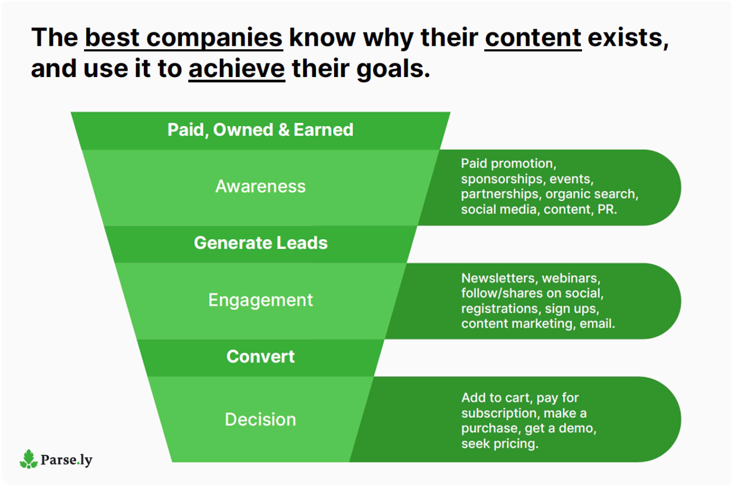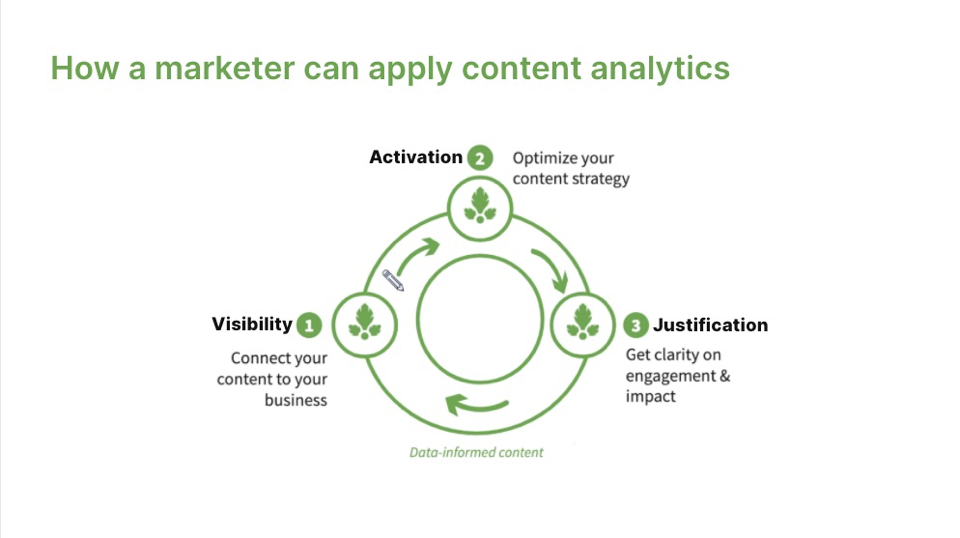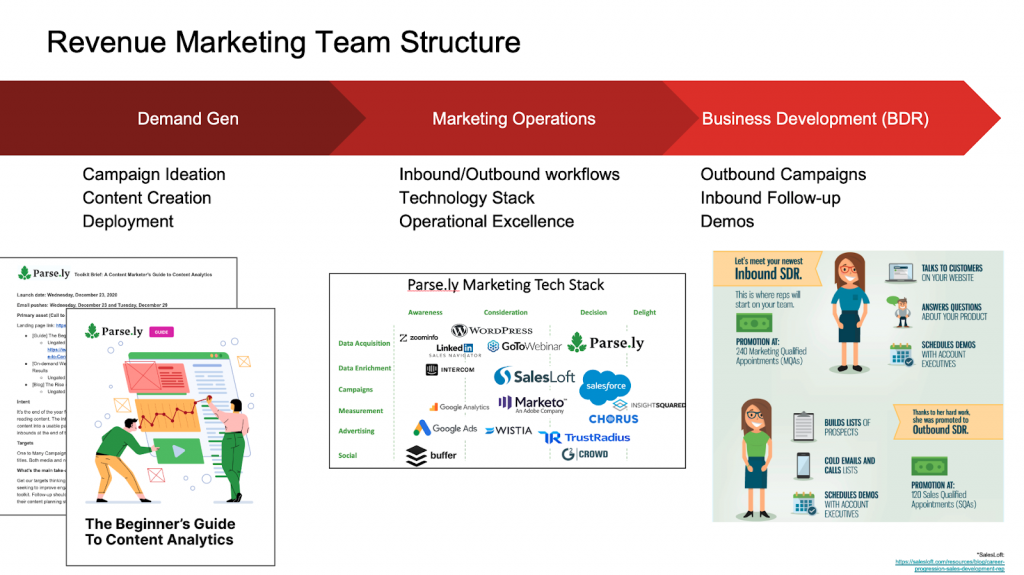Your Customers Are Speaking To You, But You’re Not Listening | AdWeek Elevate Recap

I had the opportunity to speak at AdWeek’s 2021 Elevate Performance marketing conference. The overarching theme: In a year that’s been marked by an acceleration of personalized, targeted marketing via innovations in mar tech, brand marketers are leveraging tools and platforms to optimize product awareness, build their brands and engage directly with customers.
Asked to contribute to this topic, I started thinking about the untapped potential of content. As performance marketing goes, our content is in constant competition for eyes on the page, the importance of engagement rate and understanding what visitors are doing with our content is more important than ever. So as I considered the untapped potential of content, my goal for the talk was to tap into what it means to grow, engage and convert your audience.
Enter my talk track ‘Your Customers are speaking to you but you’re not listening.’ A little secret before I start – everyone reading this is probably doing some if not all of what I’m writing about. The intent is to provide a few good nuggets of info and get us all thinking about what customers are saying to us and are we really listening.
Table of Contents
- Don’t overlook your content data
- Developing the right content marketing tactics using analytics
- Applying content analytics to your campaigns
- Team structuring best practices
Don’t overlook your content data
So let’s dive in. No matter the industry, your target audience has instant access to websites, reviews, and resources about your product and your company. Did you know that 88% of your customers read about you before raising their hand? They’re speaking to you through engagement data, but are you listening?

In this all-digital climate we’re in, it’s becoming increasingly difficult to balance their access with your brand narrative and the impact it’s making on your bottom-line results. While today’s growth marketers have moved past vanity metrics—knowing that content marketing tactics must be connected with business objectives—most aren’t using their metrics to future-proof their content marketing strategies.
I read in a recent Brafton post: In 2020, the only way to create highly personalized content that will perform well is to use data to understand the target audience, and analytics to reverse engineer the content that this audience values. The good news is that this is already starting to happen: Going into 2020, web analytics tools represent the most commonly used type of content marketing technology.
So as we’ve rounded the corner out of 2020 and very much inline with the theme of AdWeek’s Elevate Performance Marketing conference, highly personalized content combined with an analytical approach for measuring success and failure is the best way to tap into the potential of your content strategy.
Developing the Right Content Marketing Tactics Using Analytics
So let’s talk about developing the right content marketing tactics using analytics.
Marketing is about storytelling.
One of the primary functions of Marketing has always been storytelling and content has always been at the heart of the narrative. The good news is that now it’s easier than ever for companies to bring those stories directly to their consumers. We can have authentic destinations, we can engage with our customers via social, and we can create meaningful experiences to drive larger audiences. Content marketing and the way the digital landscape has changed in the past year is allowing us to focus on storytelling more than ever.
I’m sure some of you reading this post are tremendous storytellers, just as I’m sure some of you are growth and content marketers who diversify your content mixes and really take the time to get your story out there, but if you don’t have a handle on analytics delivered throughout content production – how can you understand if it’s working or not? How are you reporting to your higher ups what marketing is truly contributing to the business?
We need a more comprehensive approach so, as marketers, it’s only right that we think about it in the form of a content marketing funnel. The best companies right now understand why their content exists and use it to achieve their goals. So this isn’t necessarily a ‘funnel stage’ post or a recommendation for how to set it up, but it’s a look at and way to think about the storytelling I mentioned earlier. Think about what your content should be helping you achieve at each stage of your customers’ journey with your brand. This is where you start to understand ‘what are my customers telling me?’ and ‘how can I use that input to produce better results?’

Applying Content Analytics to Your Campaigns

As marketing leaders, demand marketers, content strategists, etc. we’re all tasked with creating a content plan, but not everyone’s budget feels adequate to accomplish that. That’s where measuring and justifying your work is so important. My advice: have comfort knowing that there are ways to keep on producing that content and justify the value to win more buy-in from the purse-holders.
Just remember:
- Visibility is how we connect content to their business.
- Activation of content analytics drives a better content strategy.
- Justification gives clarity on engagement and impact. This is how you can articulate how powerful your content is.
Team Structuring Best Practices – Putting it All Together

Content should play a key role throughout the different functions within your revenue/growth marketing team. Above is how we set up our team at Parse.ly – with content coming into play in demand gen as a driver for leads, in marketing operations as campaigns to run and track, and in business development as an inbound/outbound sales enablement tool.
Key Takeaways
I wanted to leave you with three main takeaways from this post:
- Don’t overlook your content data — listen to it, apply it, then repeat
- Develop the right content marketing tactics using analytics — align them to your company KPIs
- Apply those analytics to your campaigns — see what’s working and diversify your mix
Realize the untapped potential of content